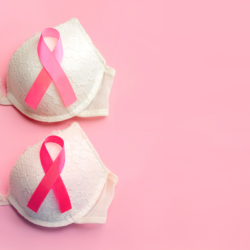Today, endocrine disruptors are increasingly present in our daily lives. Food, pesticides, cosmetics… They come into contact with us through various consumer products. And very often, we don’t even suspect that they may contain them. And yes! Whether in small or large quantities, they are present in many everyday products. Today, endocrine disruptors are increasingly present in our daily lives. Food, pesticides, cosmetics… They come into contact with us through various consumer products. And very often, we don’t even suspect that they may contain them. And yes! Whether in small or large quantities, they are present in many products. In this article, you will find out what an endocrine disruptor is, but also how to recognise it in a formula.
What is an endocrine disruptor?
Whether natural or man-made, a multitude of chemicals can mimic or interfere with our endocrine system. Commonly referred to as endocrine disruptors, they can cause developmental, reproductive, brain and immune failures and much more.
Who can be affected?
Various species, including humans, are exposed to these endocrine disruptors. In fact, we can all be victims of hormonal disturbances. It is also possible that the adverse effects can be detected in children and in the environment of those affected.
How do they work?
Endocrine disruptors work in much the same way as THC does in our bodies. The difference is that they attack the hormonal system and not the nervous system. Thus, they take up residence in the body in order to replace certain hormones. To go further, disruptive molecules act on hormones and organs as follows: ● The mimetic effect: initially, the molecules imitate the actions of the targeted hormones, and then take their place.
- The blocking effect: first, they bind to the receptors with which hormones normally interact; then they prevent them from acting.
- The disruptive effect: once they are in place, they alter the effects of natural hormones or their circulation in the body.
Where do endocrine disruptors come from?
Our environment is full of endocrine disruptors. We find them in the air, in water, in food and in many consumer products that we use almost every day. These bad molecules penetrate the body: Orally: food, drinks, medicines, etc. Inhalation: dust, polluted air, etc. Skin: cosmetics, impure water, etc.
Where to find the list of endocrine disruptors?
As you can see, hormone disruptors are everywhere. Unfortunately, it is impossible to avoid them completely. Nevertheless, researchers and specialists are on the case. They are doing their best to detect them. So in a few years’ time, the chances of us coming into contact with these harmful substances will be reduced. In order to achieve this, the majority of brands, especially in the food and beauty/wellness sectors, prefer to go down the organic route. This is how various products and cosmetics devoid of endocrine disruptors were born, such as the Light Cotton Organic Panty Liner by Les Petites Choses, or the Nourishing 3-in-1 Sweet Almond Stick Mask by La-Rosée Cosmétiques. That said, even if the label clearly states ORGANIC, a product may still contain one or more endocrine disruptors. Fortunately, lists of endocrine disruptors have been created so that consumers can easily recognise them. These lists are available to everyone on the web or on the websites of certification bodies. For example, you can consult reliable platforms such as edlists.org and anses.fr. edlists.org Five national authorities in the European Union (France, Netherlands, Belgium, Sweden, Denmark) have created this list. It contains three lists of substances: I: Substances identified as endocrine disruptors at EU level. II: Substances under assessment for endocrine disruption under EU legislation (included in CoRAP). III: Substances considered by the national assessment authority to have endocrine disrupting properties.
Sources: https://www.niehs.nih.gov/health/topics/agents/endocrine/index.cfm https://pubmed.ncbi.nlm.nih.gov/29126512/ https://www.ncbi.nlm.nih.gov/books/NBK569327/







